Keys to Mathematical Treasure Chests: Andean Khipus
First designated a Convergence Mathematical Treasure in 2008, Andean khipus (also spelled quipus or kipus) are among the most distinctive recordkeeping devices known to scholars from disciplines as varied as history, mathematics, anthropology, and computer science (see Figure 1). For at least 1,000 years (ca 950–1950 CE), Andean peoples used these bunches of knotted strings for recording numerical and non-numerical information. Khipu use is most famously associated with the Inka Empire (ca 1400–1532 CE), whose administrators utilized khipus to maintain accounts of millions of people, as well as—according to some colonial-era chronicles—annals, genealogical records, and songs. The system of base-10 numerical knots on most khipus was only deciphered about one hundred years ago, by the Brooklyn, NY, teacher and historian of mathematics L. Leland Locke (1875–1943) [1923].
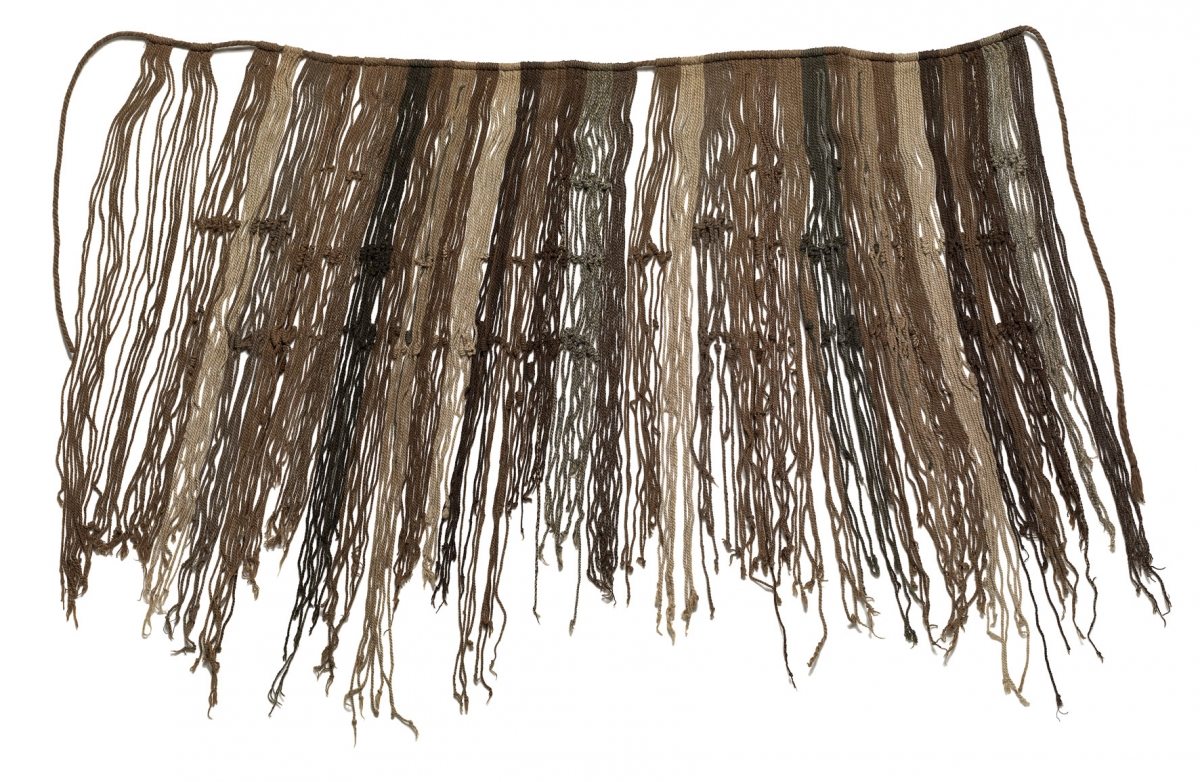
Figure 1. Inka-style khipu VA 16148 in the Ethnologisches Museum, Berlin (© Ethnologisches Museum, Staatliche Museen zu Berlin, made available via Creative Commons Attribution-NonCommercial-ShareAlike 4.0 License).
See the online record at https://smb.museum-digital.de/object/28561.
In the century since Locke’s numerical breakthrough, efforts to interpret khipus’ other, potentially non-numerical elements have been pushed forward by scholars with considerable speed. Rubén Urbizagástegui Alvarado [2014] estimated that over 50% of the 800+ khipu-related works published since 1533 CE have emerged in the last 20 years. Such a flurry of activity by researchers around the world, while exciting, has nonetheless rendered it difficult for interested observers to keep pace with the range of theories, hypotheses, and—of particular interest here—the available digital records of khipus themselves.
This article thus endeavors to compile online and open-access resources that offer various entry points into the world of khipu studies. In doing so, I hope to highlight the multiple contributions of works on the khipu published outside of (and in addition to) traditional academic works such as journal articles, monographs, and edited volumes. Readers will also be introduced to a broad diversity of khipu traditions along the way. Indeed, it would be difficult to avoid the variety of locales and styles represented by these objects, given that Inka khipus represent less than 15% of the lifespan of active khipu use in the Andes.
In an effort to reflect the khipu research landscape, I have organized this piece to mirror two of the field’s most well-developed foci:
- the documentation of individual artifacts and collections by museums; and
- quantitative and digital analysis projects that aim to uncover khipus’ undeciphered contents.
I hope to show that each of these is well-represented among existing online resources and can serve teaching and research in diverse ways.
Keys to Mathematical Treasure Chests: Andean Khipus – Museum Collections and Documentation
Two basic but important questions are worth addressing up front: How many khipus survive today? Where are they located? As of 2021, I have found there to be at least 1,386 khipus in 143 museums and private collections in over 20 countries (see Figure 2). These are tabulated in an online appendix accompanying my recent book, which introduces non-specialist readers to khipus and khipu research [Medrano 2021b]. Additional specimens continue to emerge from ongoing archaeological work in the Andes, with Inka-era accounting contexts particularly well-represented in recent years (e.g., Barraza Lescano, Areche Espinola, and Marcone Flores [2022]; Clindaniel [2019, chap. 4]). Most khipus in museum collections were excavated on the Peruvian coast between the late 19th and early 20th centuries, with hundreds removed from the Andes and subsequently deposited in North America, Europe, and Asia.
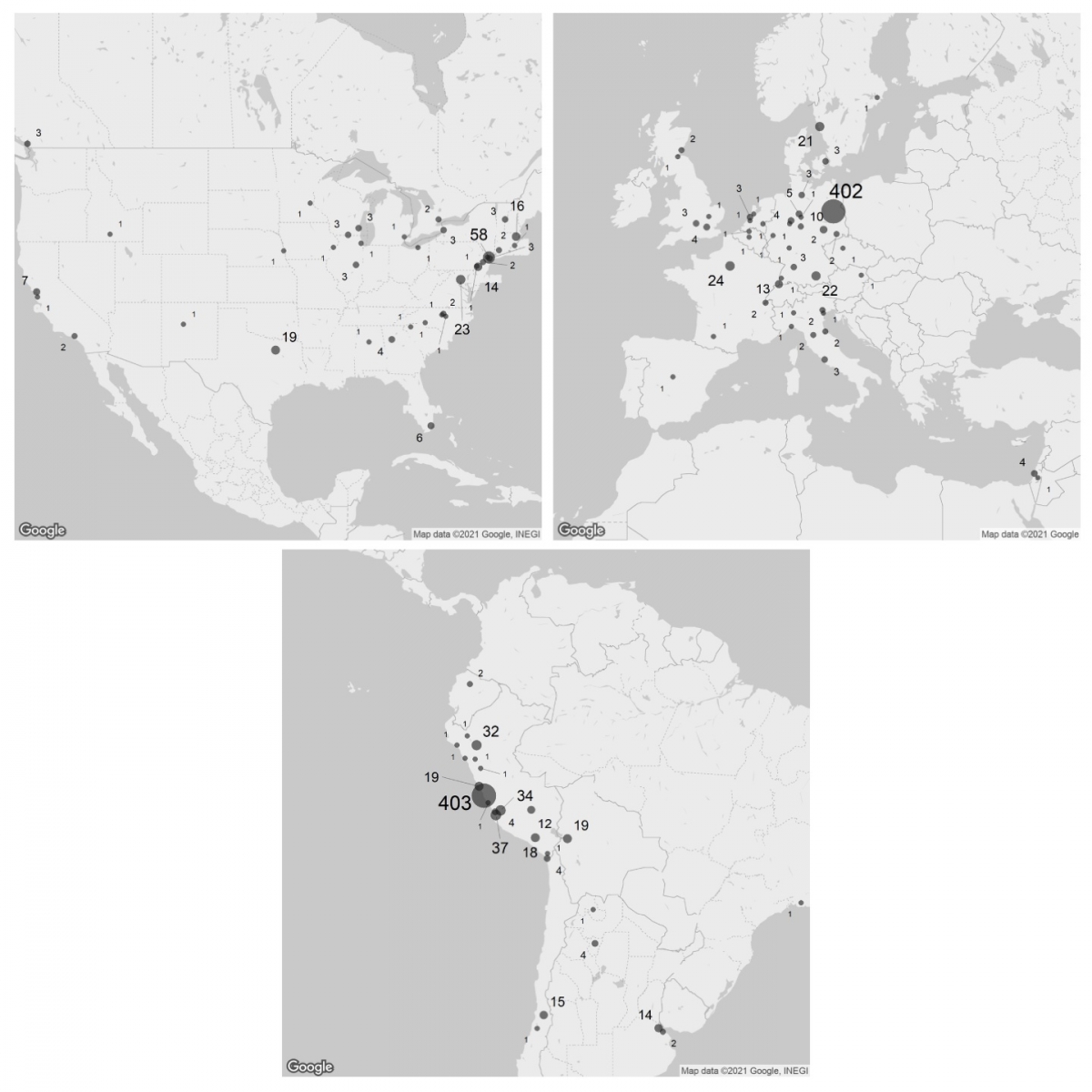
Figure 2. Andean khipus in museums and private collections (maps by Manuel Medrano).
Some collections are grouped by geographic proximity; see [Medrano 2021b].
Fortunately, many, if not most, khipus from among the global corpus have been photographed and can be found online. The museum databases associated with the largest khipu collections are a logical starting point; each online platform offers distinct benefits to interested users.
 Searching “khipu” on the collections portal of the Ethnologisches Museum, Berlin yields about 300 matches, with relatively large thumbnails arranged in a grid aiding high-level comparison. Most objects’ entries list the names of their collectors (largely Germans) and reported find spots. The larger khipus also have accompanying notes describing the arrangement of strings, their diameters, and their colors, for the most part written in English. To find especially high-resolution images of several khipus in the Berlin collection, see the portfolio produced for MacGuffin Magazine by Mathijs Labadie, a Rotterdam-based photographer. The accession numbers for several of the specimens can be found by zooming in on the affixed tags. Entering the numbers into the Berlin collections portal will then yield further information.
Searching “khipu” on the collections portal of the Ethnologisches Museum, Berlin yields about 300 matches, with relatively large thumbnails arranged in a grid aiding high-level comparison. Most objects’ entries list the names of their collectors (largely Germans) and reported find spots. The larger khipus also have accompanying notes describing the arrangement of strings, their diameters, and their colors, for the most part written in English. To find especially high-resolution images of several khipus in the Berlin collection, see the portfolio produced for MacGuffin Magazine by Mathijs Labadie, a Rotterdam-based photographer. The accession numbers for several of the specimens can be found by zooming in on the affixed tags. Entering the numbers into the Berlin collections portal will then yield further information.
 Another panoramic view is available through the online catalog of the Museo Nacional de Arqueología, Antropología e Historia del Perú (MNAAHP), which holds the world’s second-largest khipu collection. Searching “quipu” returns some 110 of the MNAAHP’s 200+ specimens. Some entries are accompanied by close-up images, especially of the complex, horizontal primary cords from which the strings hang on most examples. A comprehensive, quantitative survey of the MNAAHP khipu collection was carried out about a decade ago [Adawi Schreiber et al. 2011]. Several specimens from the collection are also included in a recently-published, freely-available catalog of 78 khipus in dozens of museums, with photographs that highlight their various styles and formats [Pancorvo 2020, pt. 2].
Another panoramic view is available through the online catalog of the Museo Nacional de Arqueología, Antropología e Historia del Perú (MNAAHP), which holds the world’s second-largest khipu collection. Searching “quipu” returns some 110 of the MNAAHP’s 200+ specimens. Some entries are accompanied by close-up images, especially of the complex, horizontal primary cords from which the strings hang on most examples. A comprehensive, quantitative survey of the MNAAHP khipu collection was carried out about a decade ago [Adawi Schreiber et al. 2011]. Several specimens from the collection are also included in a recently-published, freely-available catalog of 78 khipus in dozens of museums, with photographs that highlight their various styles and formats [Pancorvo 2020, pt. 2].
For those interested in the history of khipu collecting, several institutions have made available scans of the hand-written accession cards produced in conjunction with the khipus’ depositings.
 The American Museum of Natural History (AMNH) in New York, home to the third-largest khipu collection, lists 115 specimens under the label “kipu” on its collections search portal. In the default “list” view, pay special attention to the bottom-left corner of each result for mentions of “Tag/Textile Cards.” When this term appears, clicking on its hyperlink displays an image of each object’s accession card, including handwritten commentary and original photographs from a collection—deposited in the AMNH in 1901—of Eduard Gaffron, a German ophthalmologist who was a prolific collector of Andean material culture [Gänger 2014, p. 111].
The American Museum of Natural History (AMNH) in New York, home to the third-largest khipu collection, lists 115 specimens under the label “kipu” on its collections search portal. In the default “list” view, pay special attention to the bottom-left corner of each result for mentions of “Tag/Textile Cards.” When this term appears, clicking on its hyperlink displays an image of each object’s accession card, including handwritten commentary and original photographs from a collection—deposited in the AMNH in 1901—of Eduard Gaffron, a German ophthalmologist who was a prolific collector of Andean material culture [Gänger 2014, p. 111].
The AMNH khipus have played a crucial role in the history of khipu research. Leland Locke’s [1912] initial decipherment of the knot-based numerical system referred to AMNH khipu B/8713 (not currently digitized in the AMNH portal), as well as a broader corpus of samples. Among the latter was B/8715 (available by searching “B/8715”), which Locke [1923, p. 5] later described as “an example of the same advanced development as shown in [B/8713].” In the AMNH catalog, B/8715’s entry includes an accompanying accession card that notes the khipu’s lending to Locke’s academic advisor, mathematician David Eugene Smith, in November 1911.
 Slightly more detailed provenance information (and high-quality images) can be found in the extensive collection entries for the khipus in the Phoebe A. Hearst Museum of Anthropology at UC Berkeley. These were excavated from graves in the Ica Valley (southern Peruvian coast) at the turn of the 20th century by German archaeologist Max Uhle, on a “road between Chulpaca & Tate,” per the digitized accession cards. The most complete study of the Hearst specimens was carried out several decades ago by anthropologist Carol Mackey [1970, chap. 5], a UC Berkeley graduate student at the time.
Slightly more detailed provenance information (and high-quality images) can be found in the extensive collection entries for the khipus in the Phoebe A. Hearst Museum of Anthropology at UC Berkeley. These were excavated from graves in the Ica Valley (southern Peruvian coast) at the turn of the 20th century by German archaeologist Max Uhle, on a “road between Chulpaca & Tate,” per the digitized accession cards. The most complete study of the Hearst specimens was carried out several decades ago by anthropologist Carol Mackey [1970, chap. 5], a UC Berkeley graduate student at the time.
 Rounding out the historical museum resources are the well-documented khipus of the Museum of World Culture (Världskulturmuseet) in Gothenburg, Sweden. On the Museum’s collections portal, searching “quipu katalogkort” returns an assortment of historical khipu photographs (most are from the 1920s). Scrolling down or clicking the “Arkivdokument” filter yields 30 original accession cards, many of which contain striking drawings of samples in the Gothenburg collection. Figure 3, for example, reproduces a “khipu in two parts” received in an exchange from the Niedersächsisches Landesmuseum Hannover, Germany, in 1929.
Rounding out the historical museum resources are the well-documented khipus of the Museum of World Culture (Världskulturmuseet) in Gothenburg, Sweden. On the Museum’s collections portal, searching “quipu katalogkort” returns an assortment of historical khipu photographs (most are from the 1920s). Scrolling down or clicking the “Arkivdokument” filter yields 30 original accession cards, many of which contain striking drawings of samples in the Gothenburg collection. Figure 3, for example, reproduces a “khipu in two parts” received in an exchange from the Niedersächsisches Landesmuseum Hannover, Germany, in 1929.
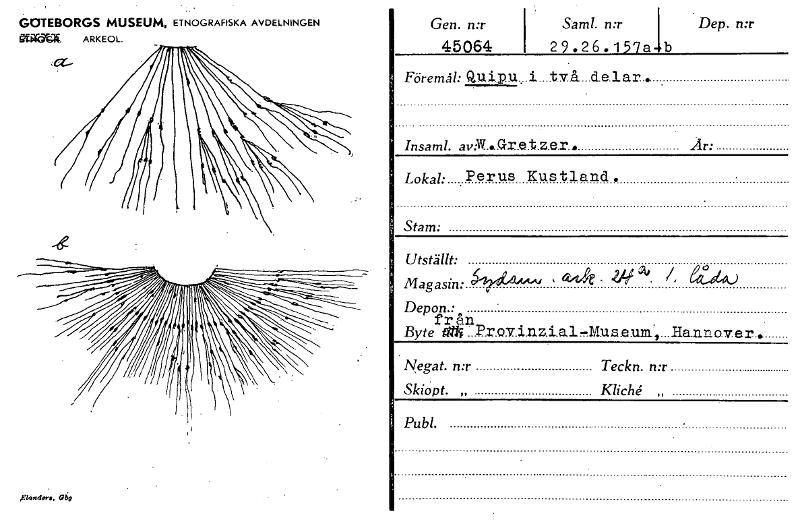
Figure 3. Accession card for a “khipu in two parts” (1929.26.0157a-b) in the
Museum of World Culture, Gothenburg (© Världskulturmuseet, made available via
Creative Commons Attribution-NonCommercial-NoDerivs 2.5 License). See the online record
at https://collections.smvk.se/carlotta-vkm/web/object/1365111.
Keys to Mathematical Treasure Chests: Andean Khipus – Collections Organized by Style and Period
The available online resources can also be grouped by the style of khipu that they document. Beginning by searching for Inka and Inka-style specimens leads us to several collections in Peru and the United States.
 Entering “quipu” in the online portal of the Museo de Sitio de Pachacamac returns some two dozen archaeological specimens that were first published as a group by the Peruvian engineer and statistician Hugo Pereyra Sánchez and colleagues [2006]. The prehispanic coastal pilgrimage site of Pachacamac is the largest known source of khipus conserved in museums today, with over 90 examples spread across collections in the Americas and Europe [Clindaniel and Urton 2017].
Entering “quipu” in the online portal of the Museo de Sitio de Pachacamac returns some two dozen archaeological specimens that were first published as a group by the Peruvian engineer and statistician Hugo Pereyra Sánchez and colleagues [2006]. The prehispanic coastal pilgrimage site of Pachacamac is the largest known source of khipus conserved in museums today, with over 90 examples spread across collections in the Americas and Europe [Clindaniel and Urton 2017].
 Similarly detailed online descriptions await users of the Museo Larco’s collection database (search “quipu”). The documentation for the 11 canonical, Inka-style results includes information on cord twist, color, and dimension, along with photographs taken from various angles.
Similarly detailed online descriptions await users of the Museo Larco’s collection database (search “quipu”). The documentation for the 11 canonical, Inka-style results includes information on cord twist, color, and dimension, along with photographs taken from various angles.
 Just as important as “textbook” Inka khipus are Inka-style examples with visible anomalies. Few museums include more such khipus than the Dallas Museum of Art (DMA). Searching the Museum’s collections returns a number of Inka-style khipus with multiple primary cords tied together, a relatively unusual phenomenon previously described at the DMA by Kylie Quave [2009].
Just as important as “textbook” Inka khipus are Inka-style examples with visible anomalies. Few museums include more such khipus than the Dallas Museum of Art (DMA). Searching the Museum’s collections returns a number of Inka-style khipus with multiple primary cords tied together, a relatively unusual phenomenon previously described at the DMA by Kylie Quave [2009].
Some 500 years before the rise of the Inka khipu, colorful knotted strings were used for administration and numerical reckoning in the pre-Inka Wari Empire. Despite a smaller global corpus of about 40 specimens [Splitstoser 2020], Wari khipus are well-documented online. Readers are encouraged to visit the accompanying website for a 2019 khipu exhibition at Dumbarton Oaks (DO) Research Library and Collections in Washington DC. A dedicated page on Wari khipus includes links to high-quality images and descriptions of several Wari specimens donated to DO in 2016. As for Wari khipus conserved in Peru, one striking circular example from the former collections of the khipu researcher Carlos Radicati di Primeglio serves as the backdrop to an overview of Wari khipus produced by Jeffrey Splitstoser in 2021. Colorful, tube-like thread wrappings, overhand knots, and thick pendant strings distinguish this largely undeciphered, pre-Inka khipu tradition.
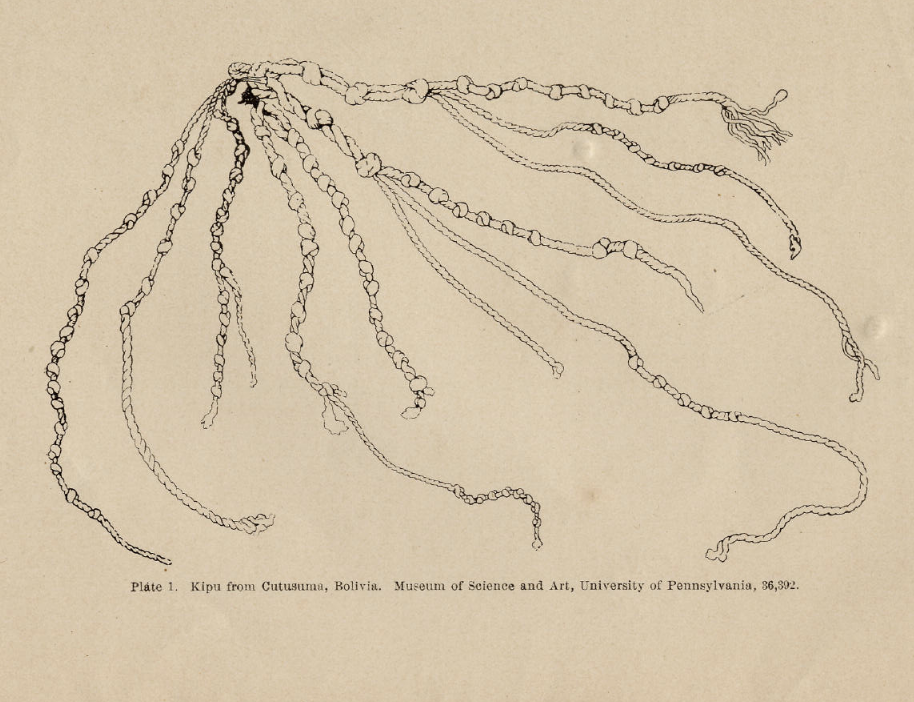
Figure 4. Drawing of a modern khipu collected by Max Uhle in 1895 [Uhle 1897, plate 1].
The remainder of the khipu’s known active lifespan comprises colonial-era and modern use (1532–ca 1950 CE). For decades following the Spanish conquest of the Inkas, complex khipus were utilized to record detailed numerical accounts, at times even being transcribed as part of Andean testimony in legal proceedings [Medrano 2021a]. Nonetheless, at present, few khipus in museums have been confidently radiocarbon-dated to this early postconquest period. Better represented online are modern khipus, utilized since the late 19th century for a wide variety of administrative, economic, and ritual purposes. Object number 36392 in Philadelphia’s Penn Museum—a khipu from Cutusuma, Bolivia—is one such example. In 1895, Max Uhle collected this specimen during an excursion to the Lake Titicaca area (Figure 4). Its strings efficiently subdivided local sheep into various categories, informing Uhle’s [1897, p. 57] claim that “modern kipus [sic] are the direct descendants of the ancient ones” (see also Loza [2000] and Hyland [2014]). Several decades later, a Jesuit priest named Antonio Sempere donated five agricultural produce khipus he had collected from Lake Titicaca’s Island of the Sun to the Smithsonian National Museum of Natural History (NMNH). The khipus, created between 1948 and 1949 and described extensively by Sabine Hyland and Christine Lee [2021], can be found online by searching “‘Colegio San Calixto’ quipu” in the NMNH collections portal.
A final note is warranted on khipu preservation and conservation science. The process by which archaeological khipus—often fragile, tangled, and faded—are prepared for long-term storage is not well-represented online, though Patricia Landa Cragg’s [2018] account of conserving recently discovered Inka khipus from a storage complex at Inkawasi is an important exception (see “Año 2, Número 6” on the journal’s website). Among khipus already in museums, Martina Brunori and Stefania Passerini [2019] have described the careful process of re-mounting a specimen in the ethnological collections of the Vatican.
Keys to Mathematical Treasure Chests: Andean Khipus – Quantitative Research and Digital Analysis
Beyond documentation and conservation, an active vein of the last 50 years has been the subjection of khipus to various mathematical, observational, and—most recently—digital analyses. Such efforts, often motivated by the goal of khipu decipherment, are widely available online. They are surveyed chronologically here.
Between the 1960s and 1980s, the identification of elaborate patterns and mathematical relationships within individual samples was a hallmark of khipu research. Carlos Radicati di Primeglio, an Italian-born scholar, dedicated decades of his life to the endeavor, identifying color schemas and numerical phenomena in his collection of specimens that revealed their purportedly “extranumerical” properties [Radicati di Primeglio 1964]. Most of Radicati’s published work was compiled for a 2006 volume, arranged by the Universidad Nacional Mayor de San Marcos, that is available online. Radicati’s successors would be an American duo, Marcia Ascher and Robert Ascher, who from the early 1970s cataloged hundreds of khipus in the Americas and Europe [Ascher and Ascher 1981]. A mathematician (Marcia) and an anthropologist (Robert), the Aschers produced two “Databooks,” today preserved on a Cornell University webpage, that list cord-by-cord observations and internal arithmetic relationships for over 200 samples. Another webpage preserves some of the Aschers’ own photographs of the specimens. An overview of the Aschers’ mathematical investigations appears in a 2021 lecture of mine to Gresham College, London.
 The Ascher Databooks provided most of the initial entries for the first digital khipu database, which was designed and implemented by Carrie Brezine at Harvard University beginning in 2002. Now managed at the University of Chicago, the Open Khipu Repository (OKR) is open source and stores detailed, downloadable information on 630 khipus from around the world. A newly-formed independent advisory board for the OKR, presently consisting of Carrie Brezine, Jon Clindaniel, Ivan Ghezzi, Sabine Hyland, and me, is working to ensure that khipu research is transparent, inclusive, and accountable going forward; we have recently published a number of concrete steps toward this end [OKR Team 2022].
The Ascher Databooks provided most of the initial entries for the first digital khipu database, which was designed and implemented by Carrie Brezine at Harvard University beginning in 2002. Now managed at the University of Chicago, the Open Khipu Repository (OKR) is open source and stores detailed, downloadable information on 630 khipus from around the world. A newly-formed independent advisory board for the OKR, presently consisting of Carrie Brezine, Jon Clindaniel, Ivan Ghezzi, Sabine Hyland, and me, is working to ensure that khipu research is transparent, inclusive, and accountable going forward; we have recently published a number of concrete steps toward this end [OKR Team 2022].
Combining these records with an additional database stored locally at the MNAAHP (the second-largest khipu collection, see above), today some 866 khipus are stored in full digital format, about 60% of the known total [Medrano 2021b, p. 117]. The history of their cataloging and digitization since 1920 is reproduced in Figure 5. Note the significant spike in the bolded line in the late 1970s, coinciding with the Aschers’ research. More fine-grained analyses are possible by subdividing geographically; the history of European khipu cataloging reproduced in Figure 6 is one such example. The OKR’s relational database uses a standardized khipu recording schema described in a recent video from the British Museum’s preparation of OKR data in 2021. Peruvian archaeologist Alejo Rojas Leiva [2009] and others have contributed to ongoing discussions surrounding best practices in the digital encoding of khipus.
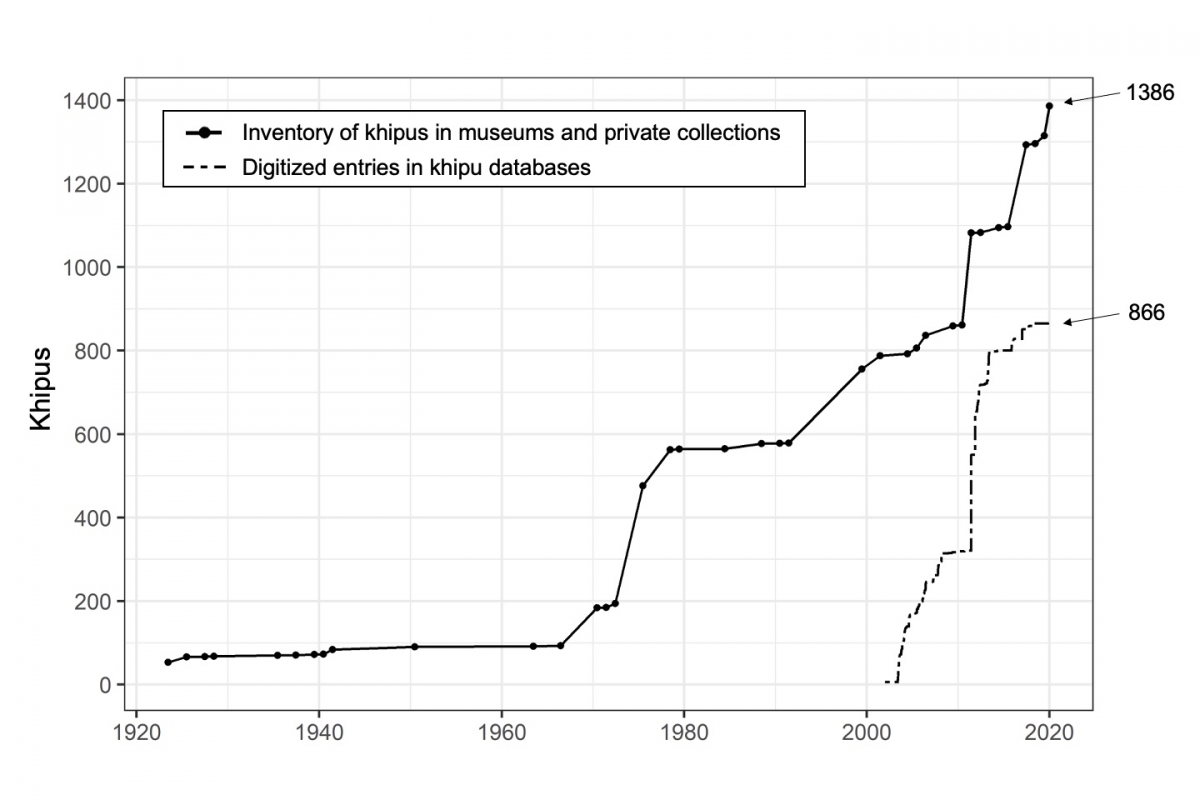
Figure 5. Worldwide khipu cataloging and digitization efforts, 1920–2020 (graph by Manuel Medrano).
Figure 6. Dynamic map of khipu cataloging in European museums, 1920–2020. Note the world’s largest
khipu collection at the Ethnologisches Museum, Berlin (animation by Manuel Medrano).
The widespread availability of khipu data has both enabled and encouraged a wide variety of new digital initiatives in the last five years. An exciting entry point for the uninitiated is The Khipu Keepers [2021], an online compilation of research overviews produced by Google Arts & Culture and the Museo de Arte de Lima (MALI), in consultation with multiple specialists. High-quality images of Wari, Inka, colonial, and modern khipus appear throughout. Additionally, Cecilia Pardo of the British Museum has presented a thoughtful khipu overview in connection with the Museum’s first major Peruvian exhibition [2021], as has Kylie Quave in a thoroughly illustrated essay for the art history platform Smarthistory [2022].
 The Khipu Keepers project emerged in part from a major khipu exhibition at the Museo de Arte de Lima in 2020–2021, which has been digitally preserved in 3D. See the annotated exhibition online on the Google Arts & Culture platform, or the original scan maintained on Matterport.
The Khipu Keepers project emerged in part from a major khipu exhibition at the Museo de Arte de Lima in 2020–2021, which has been digitally preserved in 3D. See the annotated exhibition online on the Google Arts & Culture platform, or the original scan maintained on Matterport.
Readers interested in visualizations and computational analyses of OKR data are encouraged to explore the Khipu Field Guide (KFG), a new project by independent researcher Ashok Khosla. In addition to highly-detailed symbolic renderings of over 600 OKR khipus (e.g., Figure 7), users can explore interactive graphics accompanying Khosla’s exploratory data analysis. The KFG investigations are a welcome addition to previous computational work on the OKR carried out by Carrie Brezine (published in Urton [2006]) and Jon Clindaniel [2019].
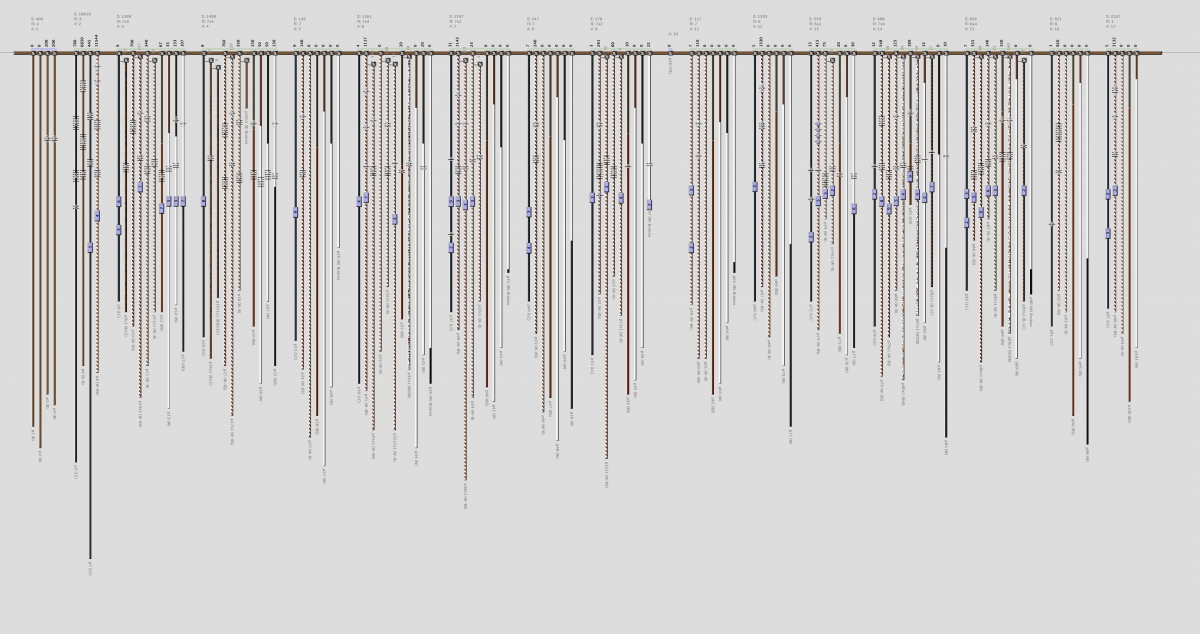
Figure 7. Symbolic diagram of khipu VA 42554, Ethnologisches Museum, Berlin, rendered from OKR data (diagram courtesy of Ashok Khosla). The khipu itself can be found online in the Museum’s collections database.
Finally, those seeking more exploratory visualizations can peruse a series of 3D models of Wari and Inka khipus in the Dumbarton Oaks collection created by archaeologist Alexandre Tokovinine (see https://skfb.ly/6RvtX, https://skfb.ly/6Rv7Q, https://skfb.ly/owxOI, and https://skfb.ly/6ZpXv). Though it remains in development, the 3D imaging of khipus holds significant promise for future analyses, capturing the multidimensionality of their strings and knots in visually striking ways.
Keys to Mathematical Treasure Chests: Andean Khipus – Conclusion and References
Conclusion
As we near the 100-year anniversary of Leland Locke’s The Ancient Quipu or Peruvian Knot Record [1923], this survey of khipu studies’ online footprint has endeavored to highlight the sheer variety of resources created since Locke’s decipherment of the numerical “khipu code.” Khipus of different times and places are maintained in the high-quality online records of dozens of museum institutions, with an ever-growing percentage encoded in an existing, open-source khipu database. Rich documentation and analyses await the online reader invested—like today’s handful of khipu researchers—in someday fully deciphering the primary sources of the ancient Andes.
References
Adawi Schreiber, Luis, Alexander Ortegal lzquierdo, Marlene Mejía Pérez, and Alejo Rojas Leiva. 2011. “Una aproximación al estudio de los quipus del MNAAHP.” In Atando cabos, edited by Carmen Arellano Hoffmann and Gary Urton, 239–63. Lima: Ministerio de Cultura del Perú and Museo Nacional de Arqueología, Antropología e Historia del Perú.
Ascher, Marcia, and Robert Ascher. 1981. Code of the Quipu: A Study in Media, Mathematics, and Culture. Ann Arbor: University of Michigan Press.
Barraza Lescano, Sergio, Rodrigo Areche Espinola, and Giancarlo Marcone Flores. 2022. “By Stones and by Knots: The Counting and Recording of Chili Peppers Stored During the Inca Occupation of the Guarco Administrative Center of Huacones-Vilcahuasi, Lower Cañete Valley, Peru.” Andean Past 13: 221–64.
Brunori, Martina, and Stefania Passerini. 2019. “Sixteenth-century Peruvian Quipu.” In Reports from the Ethnological Materials Laboratory 4, edited by Stefania Pandozy, 68–75. Vatican City: Musei Vaticani.
Clindaniel, Jon. 2019. “Toward a Grammar of the Inka Khipu: Investigating the Production of Non-numerical Signs.” PhD diss., Harvard University.
Clindaniel, Jon, and Gary Urton. 2017. “Quipus de Pachacamac. Hacia la estanderización de las convenciones de signos en el Tawantinsuyu.” In Pachacamac: El oráculo en el horizonte marino del sol poniente, 274–87. Lima: Banco de Crédito del Perú.
Gänger, Stefanie. 2014. Relics of the Past: The Collecting and Study of Pre-Columbian Antiquities in Peru and Chile, 1837-1911. Oxford: Oxford University Press.
Google Arts & Culture and MALI, Museo de Arte de Lima. 2021. The Khipu Keepers. https://artsandculture.google.com/project/khipus.
Hyland, Sabine. 2014. “Ply, Markedness, and Redundancy: New Evidence for How Andean Khipus Encoded Information.” American Anthropologist 116(3): 643–48.
Hyland, Sabine, and Christine Lee. 2021. “Indigenous Record Keeping and Hacienda Culture in the Andes: Modern Khipu Accounting on the Island of the Sun, Bolivia.” Hispanic American Historical Review 101(3): 409–32.
Landa Cragg, Patricia. 2018. “El proceso de la conservación de los quipus de Incahuasi.” Boletín Yungas 2(6): 61–62.
Locke, L. Leland. 1912. “The Ancient Quipu, a Peruvian Knot Record.” American Anthropologist 14(2): 325–32.
Locke, L. Leland. 1923. The Ancient Quipu or Peruvian Knot Record. New York: American Museum of Natural History.
Loza, Carmen Beatriz. 2000. “El modelo de Max Uhle para el estudio de los quipus a la luz de sus notas inéditas de trabajo de campo (1894–1897).” Indiana 16: 123–58.
Mackey, Carol J. 1970. “Knot Records in Ancient and Modern Peru.” PhD diss., University of California, Berkeley.
Medrano, Manuel. 2021a. “Khipu Transcription Typologies: A Corpus-Based Study of the Textos Andinos.” Ethnohistory 68(2): 311–41.
Medrano, Manuel. 2021b. Quipus: Mil años de historia anudada en los Andes y su futuro digital. Lima: Planeta.
OKR Team. 2022. The Open Khipu Repository (v.2.0.0). Zenodo. https://doi.org/10.5281/zenodo.6908343.
Pancorvo, Anel, ed. 2020. Quipus y quipucamayoc. Codificación y administración en el antiguo Perú. Lima: Apus Graph Ediciones.
Pardo, Cecilia. 2021. Inca Khipu: The record and writing system made entirely of knots. Curator’s Corner. The British Museum. YouTube.
Pereyra Sánchez, Hugo. 2006. Descripción de los quipus del Museo de Sitio de Pachacamac. Lima: Consejo Nacional de Ciencia, Tecnología e Inovación Tecnológica.
Quave, Kylie E. 2009. “Confronting Anomaly in the Khipu Structure: Cultural and Individual Variations from Two Museum Collections.” In Actas de las IV Jornadas Internacionales sobre Textiles Precolombinos, edited by Victòria Solanilla Demestre, 241–51. Barcelona: Universitat Autónoma de Barcelona.
Quave, Kylie E. 2022. The Inka khipu. Smarthistory: The Center for Public Art History.
Radicati di Primeglio, Carlos. 1964. La “seriación” como posible clave para descifrar los quipus extranumerales. Lima: Universidad Nacional Mayor de San Marcos.
Rojas Leiva, Alejo. 2009. “La construcción y el registro universal del quipu inca.” In Actas de las IV Jornadas Internacionales sobre Textiles Precolombinos, edited by Victòria Solanilla Demestre, 253–66. Barcelona: Universitat Autónoma de Barcelona.
Splitstoser, Jeffrey. 2020. “Los khipus Wari.” In Khipus, edited by Cecilia Pardo, 28–35. Lima: Museo de Arte de Lima.
Uhle, Max. 1897. “A Modern Kipu from Cutusuma, Bolivia.” Bulletin of the Free Museum of Science and Art of the University of Pennsylvania 1(2): 51–63.
Urbizagástegui Alvarado, Rubén. 2014. La escritura inca: Quipus, yupanas y tocapus. Lima: Hipocampo Editores.
Urton, Gary. 2006. “Censos registrados en cordeles con ‘amarres’. Padrones poblacionales pre-hispánicos y coloniales tempranos en los khipu Inka.” Revista Andina 42: 153–96.
Collections
American Museum of Natural History, New York, NY, USA.
Dallas Museum of Art, TX, USA.
Dumbarton Oaks Research Library & Collections, Washington, DC, USA.
Ethnologisches Museum, Berlin, Germany.
Museo de Arte de Lima, Peru.
Museo Larco, Lima, Peru.
Museo Nacional de Arqueología, Antropología e Historia del Perú, Lima.
Museo de Sitio de Pachacamac, Peru.
Penn Museum, Philadelphia, PA, USA.
Phoebe A. Hearst Museum of Anthropology, Berkeley, CA, USA.
Smithsonian National Museum of Natural History, Washington, DC, USA.
Världskulturmuseet, Gothenburg, Sweden.
Keys to Mathematical Treasure Chests: Andean Khipus – Acknowledgements and About the Author
Acknowledgements
I would like to thank the staff of Convergence for the invitation to prepare this article and for their comments on a previous draft. I also thank Clarissa Pacyna for her observations on an initial version of the piece.
About the Author
Manuel Medrano has researched khipus in various capacities since 2016, first as an undergraduate in Applied Mathematics at Harvard and then as a Marshall Scholar and MPhil student in the Department of Social Anthropology at the University of St Andrews, Scotland. He is now a PhD student in Latin American History at Harvard. His interests include the history of archaeology, book history, digital humanities, and the history of mathematics. He is the author of Quipus: Mil años de historia anudada en los Andes y su futuro digital (Planeta, 2021), a new book on the state of khipu research.